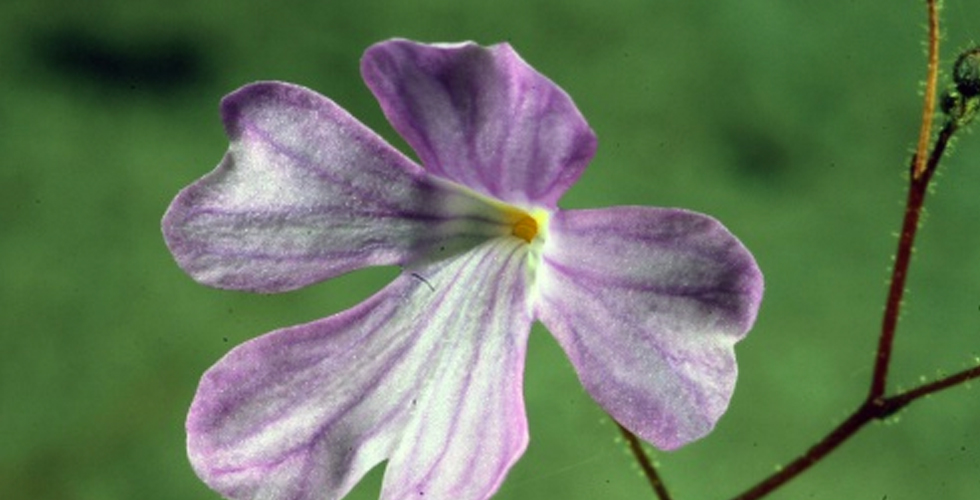Carnivorous Plant Traps Worms With Sticky Leaves

Rafael Oliveira
(ISNS) -- Plants eat the darndest things.
Scientists have discovered a small flowering plant living in the sandy soils of Brazil that traps nematodes, or roundworms, with sticky underground leaves -- and gobbles them up.
"It's a great example of how plants, which can't move to find food and water, are able to develop interesting mechanisms to deal [with] extreme environments," said Rafael Oliveira, a professor of botany at the State University of Campinas, in Sao Paulo, in Brazil, who described the plant in research published today in the Proceedings of the National Academy of Sciences.
The plant, called Philcoxia minensis, lives in sandy soils in a tiny region of the Cerrado, a tropical savannah region in Brazil. In addition to regular leaves which are suspended above ground and use the energy of the sun to convert carbon dioxide into sugars, Philcoxia also has a network of tiny underground leaves, each about the size of a pinhead, able to grab sunlight through the white sandy soil.
Those underground leaves also have a darker purpose: they contain glands
secreting a sticky mucus that traps tiny worms and starts to digest them.
To test if the plant was truly digesting the worms or simply trapping them to create more organic matter in the soil, the scientists fed the plants lab-raised nematodes that were marked with an uncommon isotope of nitrogen, a form that contains eight neutrons instead of the usual seven. They then tested the hungry plant's leaves, and found the same stable isotope present -- telling them that the worms were indeed digested with enzymes and not just broken down by microbes in the soil.
Oliveira first learned about Philcoxia from a colleague who had visited the remote site where it lives and described a plant with underground leaves. "I had never seen a plant with underground leaves before," he said. "It doesn't make a lot of sense to have leaves underground because there is less sunlight -- so we hypothesized they're getting some other kind of benefit from the leaves."
The discovery is also a call for more conservation in the Cerrado, one of the world's 34 biodiversity hotspots and the region where Oliveira was born. He said that while most efforts to preserve plants and animals focus on the rainforest, other fascinating ecosystems like the Cerrado don't often get much attention – or conservation.
Carnivorous plants are often found in tough environments with few nutrients, a deficit they make up with protein from insects, or even small rodents as in the case of a type of pitcher plant. Protein-devouring plants seem to capture the imagination of everyone, and fortunately for Hollywood, there are likely many more waiting to be discovered.
"Carnivorous plants are like orchids: there is a lot of interest in finding more plants," said Aaron Ellison, a researcher at Harvard Forest in Petersham, Mass.. "I suspect as we look for more, "we'll find more than the 600 or so spread across the plant world."
On the other hand, said Ellison, almost all plants get their nutrients from organic matter somehow. They just don't directly trap and digest it.
"There are certainly other plants with modified underground leaves that are carnivorous in some way -- some eat protozoa, others eat zooplankton or small insects," said Ellison. He added that welcoming another carnivorous plant into a new family, especially one that has the ability to trap and eat nematodes with sticky leaves, is good for natural history.
Barry Rice, a carnivorous plant expert at Sierra College, in Rocklin, Calif., who previously worked at the Nature Conservancy, said Philcoxia's sticky underground leaves are a novel -- and surprising -- strategy. "What else have we missed? It never stops to embarrass me that we spend so little on exploring our own planet."
